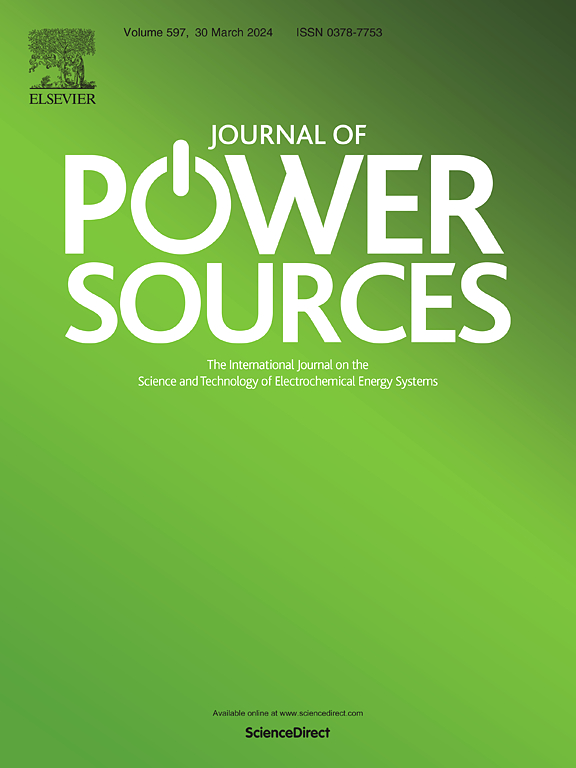Fast-charging lithium-ion batteries: Synergy of carbon nanotubes and laser ablation
IF 8.1
2区 工程技术
Q1 CHEMISTRY, PHYSICAL
引用次数: 0
Abstract
Advancing lithium-ion battery (LiB) technology to achieve 10–15-min extreme fast charging (XFC) while maintaining high energy density and longevity poses a significant challenge. Addressing Li-plating is crucial, as it depletes useable Li, causing deterioration and safety issues. This study explores a holistic approach incorporating Single-Wall Carbon Nanotubes (SWCNTs) and Laser Ablation (LA) to mitigate Li-plating while maintaining high charge acceptance under 10–15-min XFC. SWCNTs enhance the electrical conductivity and mechanical integrity of the positive electrode (PE), reducing overall cell overpotential at high charging rates. Concurrently, LA is applied to negative electrodes (NE) to reduce tortuosity of ion-diffusion pathways and increase surface wettability, improving Li-ion transport. Combining SWCNTs in the PE and LA on the NE, our experimental findings demonstrate a significant reduction in Li-plating and maintained high charge acceptance of ∼84.33 % after 800 5C (12 min) charge cycles for cells having PE with ∼3.3 mAh cm−2 and NE with 3.9 mAh cm−2 loadings. This study highlights the potential of combining SWCNTs and LA to address Li-plating in LiBs and opens new avenues for designing battery systems capable of achieving 10–15-min XFC.
求助全文
约1分钟内获得全文
求助全文
来源期刊

Journal of Power Sources
工程技术-电化学
CiteScore
16.40
自引率
6.50%
发文量
1249
审稿时长
36 days
期刊介绍:
The Journal of Power Sources is a publication catering to researchers and technologists interested in various aspects of the science, technology, and applications of electrochemical power sources. It covers original research and reviews on primary and secondary batteries, fuel cells, supercapacitors, and photo-electrochemical cells.
Topics considered include the research, development and applications of nanomaterials and novel componentry for these devices. Examples of applications of these electrochemical power sources include:
• Portable electronics
• Electric and Hybrid Electric Vehicles
• Uninterruptible Power Supply (UPS) systems
• Storage of renewable energy
• Satellites and deep space probes
• Boats and ships, drones and aircrafts
• Wearable energy storage systems
 求助内容:
求助内容: 应助结果提醒方式:
应助结果提醒方式:


